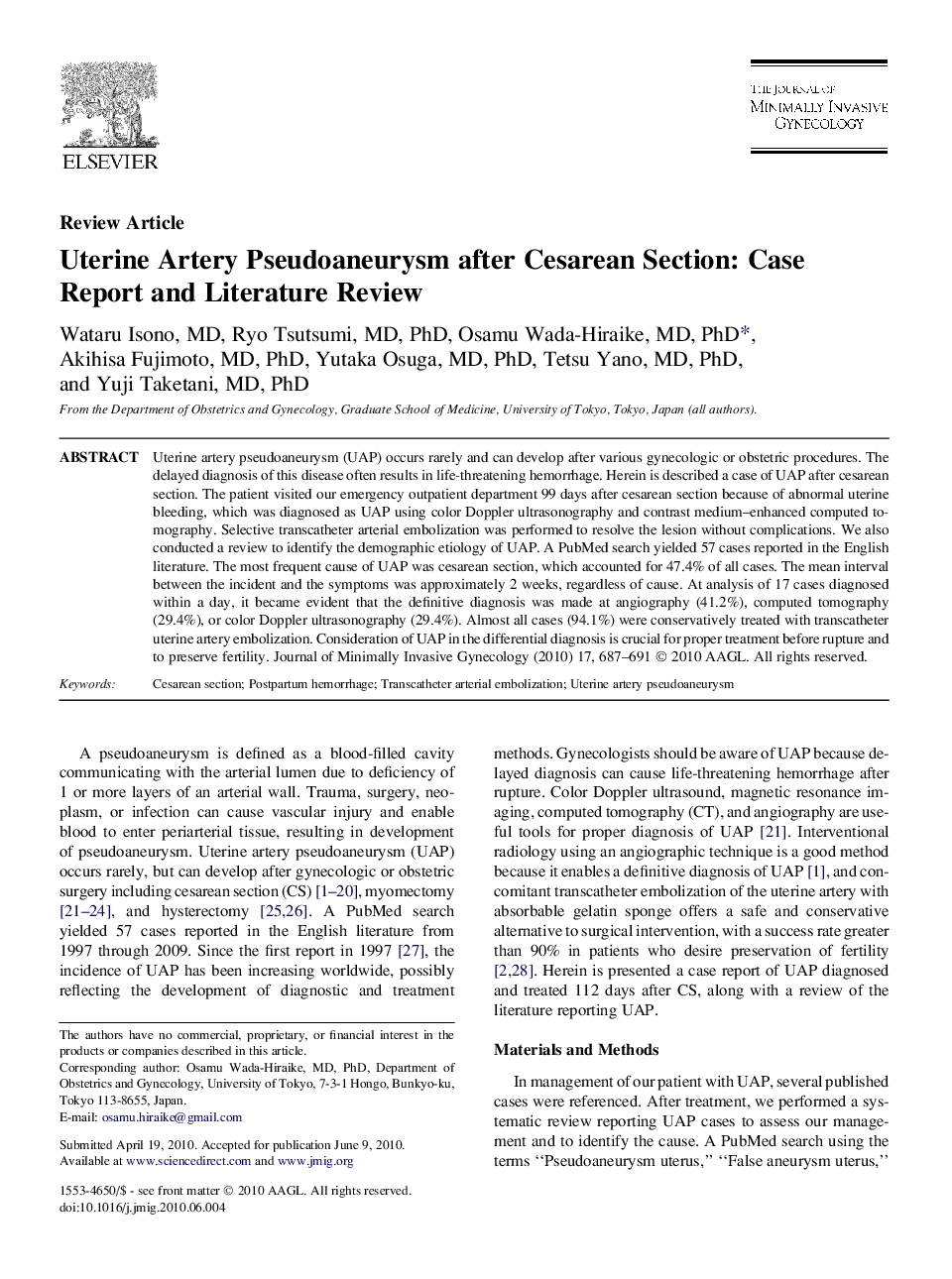| Article ID | Journal | Published Year | Pages | File Type |
|---|---|---|---|---|
| 3959408 | Journal of Minimally Invasive Gynecology | 2010 | 5 Pages |
Uterine artery pseudoaneurysm (UAP) occurs rarely and can develop after various gynecologic or obstetric procedures. The delayed diagnosis of this disease often results in life-threatening hemorrhage. Herein is described a case of UAP after cesarean section. The patient visited our emergency outpatient department 99 days after cesarean section because of abnormal uterine bleeding, which was diagnosed as UAP using color Doppler ultrasonography and contrast medium–enhanced computed tomography. Selective transcatheter arterial embolization was performed to resolve the lesion without complications. We also conducted a review to identify the demographic etiology of UAP. A PubMed search yielded 57 cases reported in the English literature. The most frequent cause of UAP was cesarean section, which accounted for 47.4% of all cases. The mean interval between the incident and the symptoms was approximately 2 weeks, regardless of cause. At analysis of 17 cases diagnosed within a day, it became evident that the definitive diagnosis was made at angiography (41.2%), computed tomography (29.4%), or color Doppler ultrasonography (29.4%). Almost all cases (94.1%) were conservatively treated with transcatheter uterine artery embolization. Consideration of UAP in the differential diagnosis is crucial for proper treatment before rupture and to preserve fertility.
